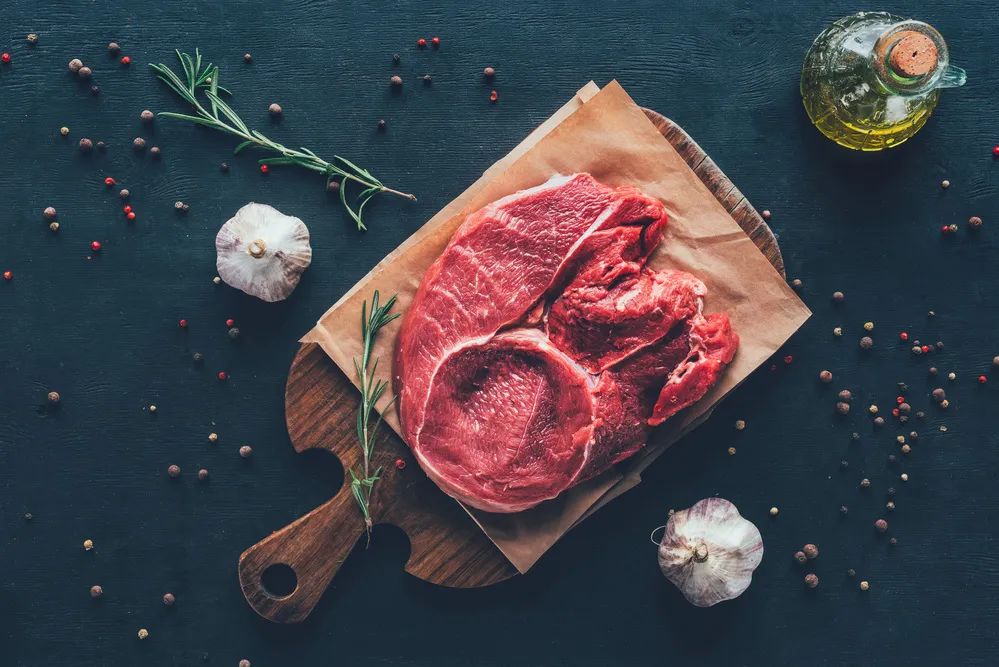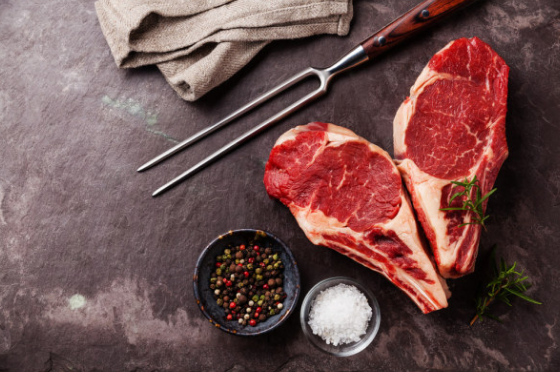
Even meat lovers may have such doubts: What is the difference between red meat and white meat?

Can you distinguish between white meat and red meat?
How to distinguish between red meat and white meat? Let me talk about a simple method: look at the color of raw meat.
Scientists have discovered the reason for the redness of red meat: myoglobin, which contains ferrous ions, will appear red.
Myoglobin is a protein that can transmit oxygen to the muscles of animals. Therefore, the greater the amount of exercise, the more oxygen the meat contains, and the redder the meat will be.
White Meat

Red Meat

Beef and mutton are redder than lean pork, and lean pork is redder than chicken breast. That means that beef and mutton contain higher hemoglobin than pork, and pork is higher than chicken.
Therefore, beef and mutton are typical red meat, while chicken is typical white meat.
But there are exceptions. Salmon feeds on algae, fish and shrimp, and the astaxanthin in the body makes the salmon meat orange-red.

Generally speaking:
The meat of cattle, sheep, deer, donkeys, horses, pigs, rabbits and other mammals is called red meat.
The meat of poultry and seafood such as chicken, duck, quail, fish, shrimp, shellfish, etc. is called white meat.
As for the meat quality:
In terms of meat quality, red meat muscle fibers are thick and hard, while white meat muscle fibers are fine and tender.
As for the nutrition:
Red meat is rich in high-quality protein. At the same time, it is rich in iron and phosphorus, especially iron, which mainly exists in heme iron, which is a high-quality source of dietary iron. In addition, red meat is also a good source of vitamin A, vitamin D and B vitamins.
White meat such as fish and poultry has relatively low fat content and high unsaturated fatty acid content. Some deep-sea fish and shellfish meat also have nutrients such as EPA and DHA, which are not found in red meat. It plays an important role in preventing dyslipidemia and cardiovascular and cerebrovascular diseases.

Red meat vs. white meat, which is healthier?
In the opinion of experts, the risks and benefits of eating red meat coexist. In contrast, white meats such as chicken and fish are more beneficial to health.

According to a report issued by the International Agency for Research on Cancer (IARC):
Cancers related to the consumption of red meat and cured meats are mainly rectal cancer and colon cancer. Some pancreatic cancer and prostate cancer may also have relations with such meat. The report shows that eating more than 100 grams of red meat a day will increase the risk of cancer by 17%.
In 2015, the World Health Organization classified red meat as a “level 2A” carcinogen.
The so-called 2A-level carcinogens are “probable carcinogens”, which refer to carcinogens that have been confirmed to have a clear carcinogenic effect in animal experiments, but the evidence from population studies is still relatively limited.
Although red meat has various risks, it does not mean that it will cause cancer if eaten.
Although it is difficult to accurately calculate the balance point between risks and benefits, it is almost certain that there is no harm in eating less, otherwise countries around the world would have kicked it out of the dietary guidelines.

A study conducted by the National Institutes of Health involving more than 500,000 people for 16 years found that the participants who ate the most white meat had a 25% lower risk of death from all causes compared with those who ate the least red meat.
What needs to be reminded is that when eating white meat such as chicken and duck, peel it off, otherwise it will increase fat intake.
Eating less red meat. What is “less”?
In the face of meat, it is not advisable not to eat, nor to eat more. Meat should be consumed best during the six periods: iron-deficiency anemia, growth and development, pregnancy, lactation, weight loss, and fitness.
Experts say that if you want to eat red meat healthy, you need to pay attention to the following 5 points
01. Choose lean meats as much as possible in your daily diet, such as tenderloin. Eat less meat with high fat content, such as pork belly and fat beef.
02. It is recommended in the Dietary Guidelines for Chinese Residents (2016) that the daily intake of livestock and poultry meat is 40 to 75 grams. You can eat a little bit of red meat every day, controlling it to about 50 grams each time, or you can eat it 3 to 5 times a week, don’t eat too much every time.
03. Low-temperature cooking is often used. In addition to steaming and stewing, meat can also be made into meat fillings, which can be used to make buns, dumplings, meatloaf and balls.
04. Cut a large piece of meat into small pieces, shred, dice, and slice the meat, and eat it with other vegetables, which can not only control the intake, but also benefit the nutritional balance.
05. The meat should be bought and eaten at once, and it is best to freeze it for no more than one month. The meat is best eaten fresh. In the frozen state, although the meat will not multiply bacteria, once it is defrosted, it will be more likely to breed bacteria than fresh meat. Therefore, do not freeze the meat again after thawing.
The best white meat: fish.
In fact, fish meat is not only healthier than red meat, even poultry, which is also white meat, is slightly inferior.
Among the many meats, fish not only retains the advantages of meat food, but also makes up for the shortcomings of most meat foods.
The protein in fish meat is the highest quality, not only higher in content than white meat such as chickens and ducks, but also higher in the proportion of essential amino acids in protein than in red meat, which is one of the main sources of high-quality protein.

In addition, fish meat has less muscle matrix protein, shorter muscle fibers, and tender meat. Compared with poultry and red meat, it tastes softer and tender, and is easier to digest and absorb.
Due to the different growth environment, fish meat contains more vitamins and minerals than terrestrial animals, such as calcium, iron, zinc, iodine, vitamin A, vitamin D, and B vitamins. In addition, fish meat is also rich in biological functional components such as DHA, glutathione, and taurine.
Just because of it, the benefits of fish meat for health are not only protecting the heart, but also many: beneficial to brain health, reducing the burden on the gastrointestinal tract, protecting eyesight, and conducive to weight control.
Only eat in the right way can help in keeping healthy.
01. When eating fish, you should also match vegetables, staple foods, etc., while controlling the intake of other meats.
02. Patients with chronic diseases or high-risk groups should eat more marine fish.
03. The elderly and children eat fish with few spines: such as turbot, flounder, pomfret, etc.
04. Fish cooking methods include steaming, braising, frying, roasting, deep-frying, etc. The healthiest method is steaming, which can not only retain the original delicious taste of the fish, but also reduce the intake of oil and salt.
Pick fresh freshwater fish. Those with poor physique are not flexible in moves, the mouth of the fish is close to the water, or the tail is swimming down, or the body of the fish is floating on the water surface (“turning the belly”). It is best not to buy such fish.
Comments